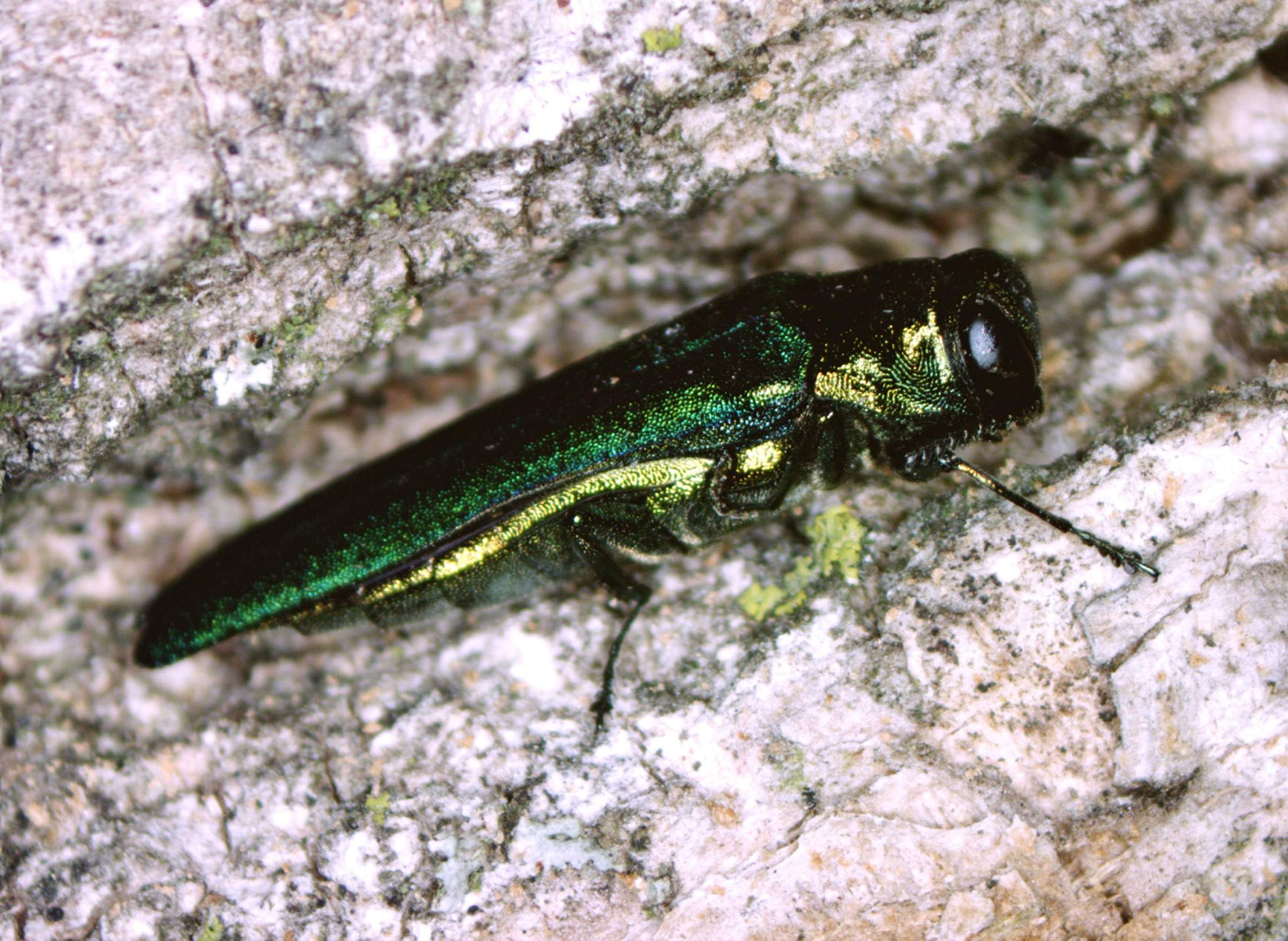
U.S. Department of Agriculture (CC BY-ND 2.0)
The emerald ash borer is eating its way across more and more Wisconsin communities.

U.S. Department of Agriculture (CC BY-ND 2.0)
The emerald ash borer is eating its way across more and more Wisconsin communities.
Like a kid watching a summer thunderstorm slowly rolling in and wondering how long until the rumbles would be directly overhead, I've had a morbid fascination with watching the progression of the emerald ash borer in the Midwest for over a decade. Although this invasive insect wasn't found in Wisconsin until 2008, my connection with it started a few years earlier.
My first job as a budding entomologist was as a summer intern for the University of Wisconsin-Extension looking for signs of emerald ash borers in the state during the summers of 2005 and 2006. Fast forward twelve years, and that storm is finally overhead, at least in my neck of the woods around southern Wisconsin.
I knew such a time would come, but it really hits close to home when the sounds of chainsaws mark the final days of your neighborhood's ash trees — at least the ones that aren't being treated.
As of May 2017, 42 counties in Wisconsin have been quarantined for the emerald ash borer. While the southeastern part of the state has already been hit hard (marked green on the map), a large chunk of the state has not yet seen the emerald ash borer or has only seen light pressure.
The emerald storm will only be getting worse over the coming years. When the emerald ash borer (Agrilus planipennis) first arrived in Wisconsin, its spread was slow and the annual number of new community-level detections was small. However, as the populations of this insect have grown in the state, the number of new detections has increased dramatically.

Unfortunately, the outlook for the Midwest's ash trees doesn't look good and the region will be dealing with this insect for years to come.
Ironically, this isn't the first time a scenario like this has played out. As the baby-boom generation grew up, they watched as elms were devastated by the likes of Dutch elm disease. As with emerald ash borer, this fungal disease had significant impacts on forested and urban areas and led to irreversible changes in the landscape around the U.S.
With all this doom and gloom, is there a light at the end of the tunnel? Possibly — but it may be a ways off.
For the time being, there are insecticide treatments available to both homeowners and professional arborists that can maintain the health of ash trees, though they can be costly and are only feasible for relatively small numbers of trees. Entomologists are exploring biological control as a potential way to control emerald ash borer populations, although results have been limited thus far. However, with any biological control program, it can take years to work the kinks out of the system and see results.
A long-term plan may be to develop varieties of ash trees that are resistant to attack by the emerald ash borer.
In several locations in Ohio and Michigan, scientists have found a small percentage of "lingering" ash trees that have survived an initial onslaught of these insects and are monitoring the trees over time for continued survival and genetic traits that may help stave off infestations. Interestingly, the blue ash species (Fraxinus quadrangulata) may hold important clues for long-term survival of these trees. In some spots in Michigan, more than 60 percent of blue ash trees have survived in areas attacked by the emerald ash borer.
While tree breeding programs may ultimately develop a resistant ash variety, this is likely years away. For now, Wisconsin will have to face the emerald storm.
More information on this invasive species is available from the Emerald Ash Borer Information Network and Wisconsin's Emerald Ash Borer Information Source.
University of Wisconsin-Extension entomologist PJ Liesch is director of the University of Wisconsin-Madison Insect Diagnostic Lab. He blogs about Wisconsin insects and can be found @WiBugGuy on Twitter.